When the summer heat cranks up, staying hydrated becomes more than a matter of comfort—it’s essential for health, energy, and even mood. While water is always the first line of defense against dehydration, certain foods can dramatically boost your hydration levels thanks to their high water content and replenishing nutrients. These edible allies can be just as refreshing as a cold glass of water, and often more satisfying.
Hydration through food isn’t just about moisture; it’s also about minerals like potassium, magnesium, and sodium that help the body retain and balance fluids. Choosing foods that naturally contain these elements can keep your body cool, your skin glowing, and your energy steady, especially when sweating becomes a daily event. What you eat has a direct impact on how you feel in the heat—and every bite counts.
Of course, not all foods help your hydration cause. Some sneakily sap your body of water, either through diuretic effects or excessive sodium. In this guide, we’ll highlight 15 hydrating foods perfect for summer, followed by 5 to keep in moderation when the sun’s blazing.
1. Cucumber
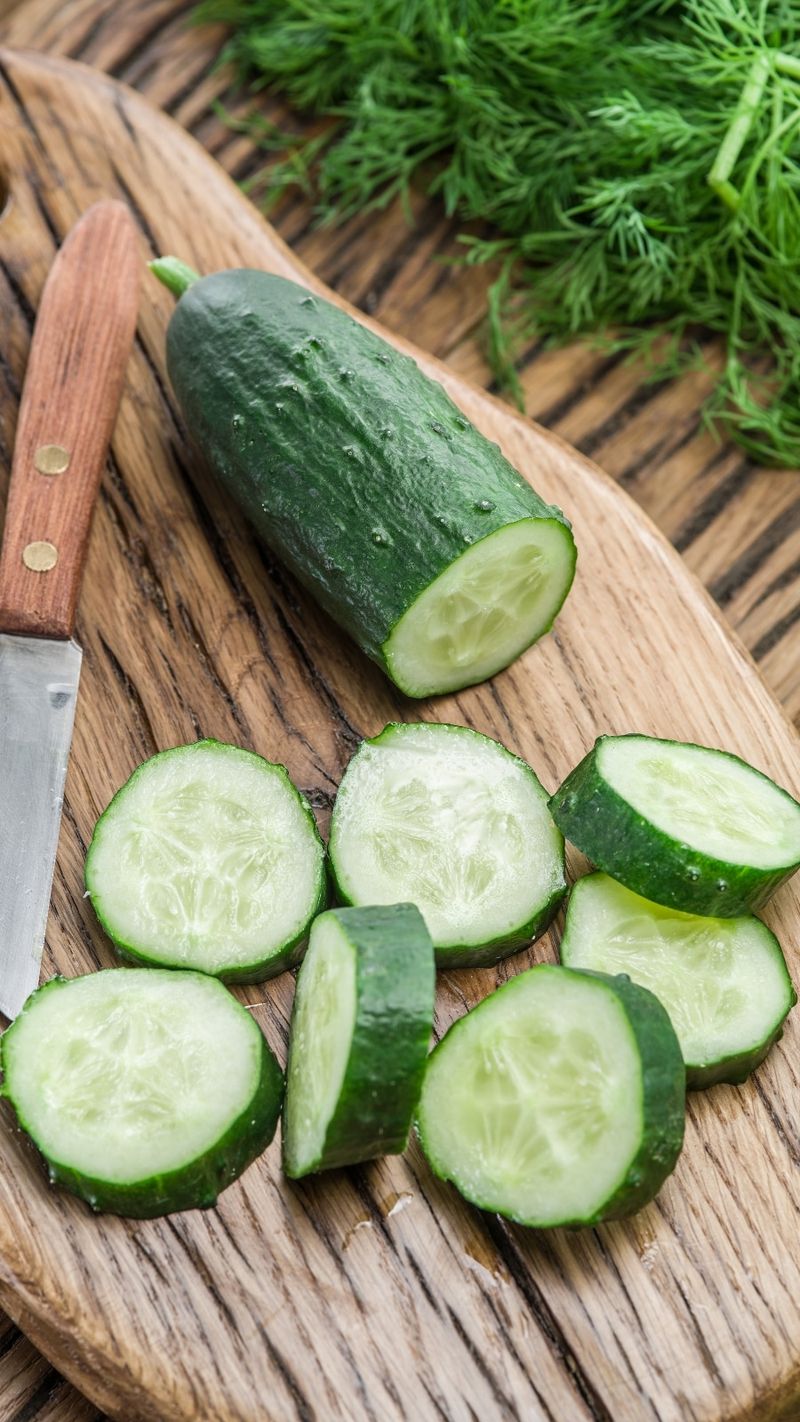
Sliding effortlessly into salads or sliced onto sandwiches, cucumber brings a crisp, cooling crunch with every bite. Thanks to its nearly 96% water content, it works almost like edible water, refreshing and rehydrating on a cellular level. Beyond hydration, cucumbers also contain small amounts of potassium and vitamin K. Often overlooked, their skin packs antioxidants, making unpeeled slices even more beneficial. On hot days, chilled cucumber slices can double as a soothing snack or a spa-like facial treatment. Light on calories but high on volume, they help curb hunger while hydrating. Whether raw, pickled, or blended into gazpacho, they’re a summer staple for good reason.
2. Watermelon
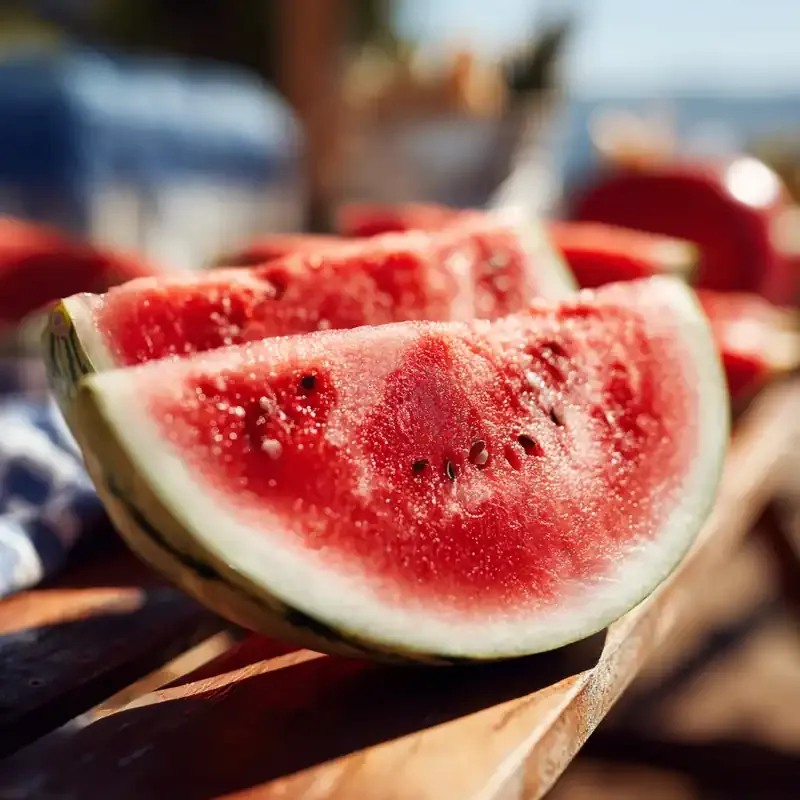
With about 92% water, it refreshes the body and pleases the palate in one go. Each bite floods your system with hydration and a burst of the antioxidant lycopene, which may help protect against sun damage. Instead of just offering water, watermelon comes loaded with vitamin C and a touch of magnesium. As a fruit that’s naturally cooling, it’s ideal for poolside snacking or post-workout recovery. Blending it into smoothies or freezing it into popsicles only amplifies its summer appeal. This juicy red fruit keeps both thirst and heat at bay.
3. Strawberries
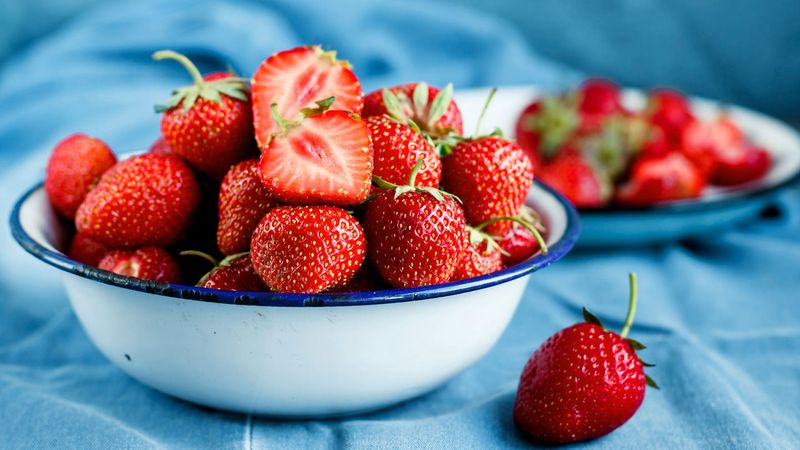
Balancing sweetness and tartness, strawberries are a flavorful way to sneak hydration into your day. They contain over 91% water, helping to refresh your body and skin from the inside out. Eaten fresh, tossed into salads, or blended into drinks, their versatility makes them a seasonal favorite. Nutritionally, they pack antioxidants and vitamin C, supporting immune health and collagen production. Unlike many fruits, strawberries offer a fiber-water combo that helps maintain digestion while hydrating. Rinsing and storing them properly keeps their delicate texture and flavor intact. Every vibrant bite delivers hydration with a satisfying snap.
4. Lettuce

Filling wraps, bowls, and sandwiches, lettuce offers more than just a crunch. With up to 95% water, especially in iceberg and romaine varieties, it’s an efficient way to increase your fluid intake without even trying. Often dismissed as nutritionally bland, lettuce still provides folate, vitamin K, and trace minerals. Its neutral flavor makes it adaptable to countless dishes, enhancing meals with volume and hydration. Using it in place of bread or tortillas boosts hydration while cutting carbs. Lettuce leaves can also be used as a cooling layer in grilled dishes or burgers. It’s a low-key, high-impact food for hot weather eating.
5. Celery
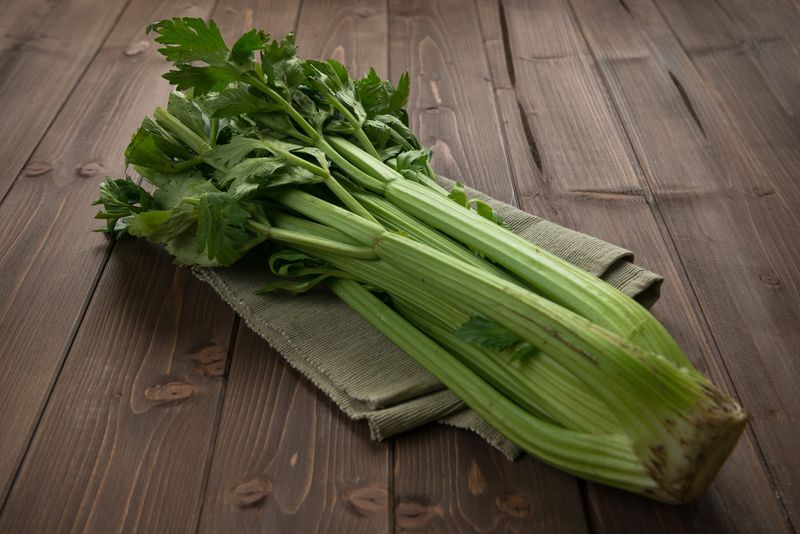
Known for its satisfying snap, celery is more than just a vehicle for peanut butter. With approximately 95% water, it hydrates the body while offering a subtle salty flavor that hints at its natural sodium and potassium content. Rather than being empty, its crunch delivers electrolytes that help retain fluids. Adding it to soups, salads, or smoothies brings both texture and refreshment. Because of its fibrous structure, celery aids digestion and promotes a feeling of fullness. Pairing it with creamy dips or hummus creates a hydrating snack that doesn’t skimp on flavor. Long underestimated, it’s a hydrating hero in disguise.
6. Zucchini
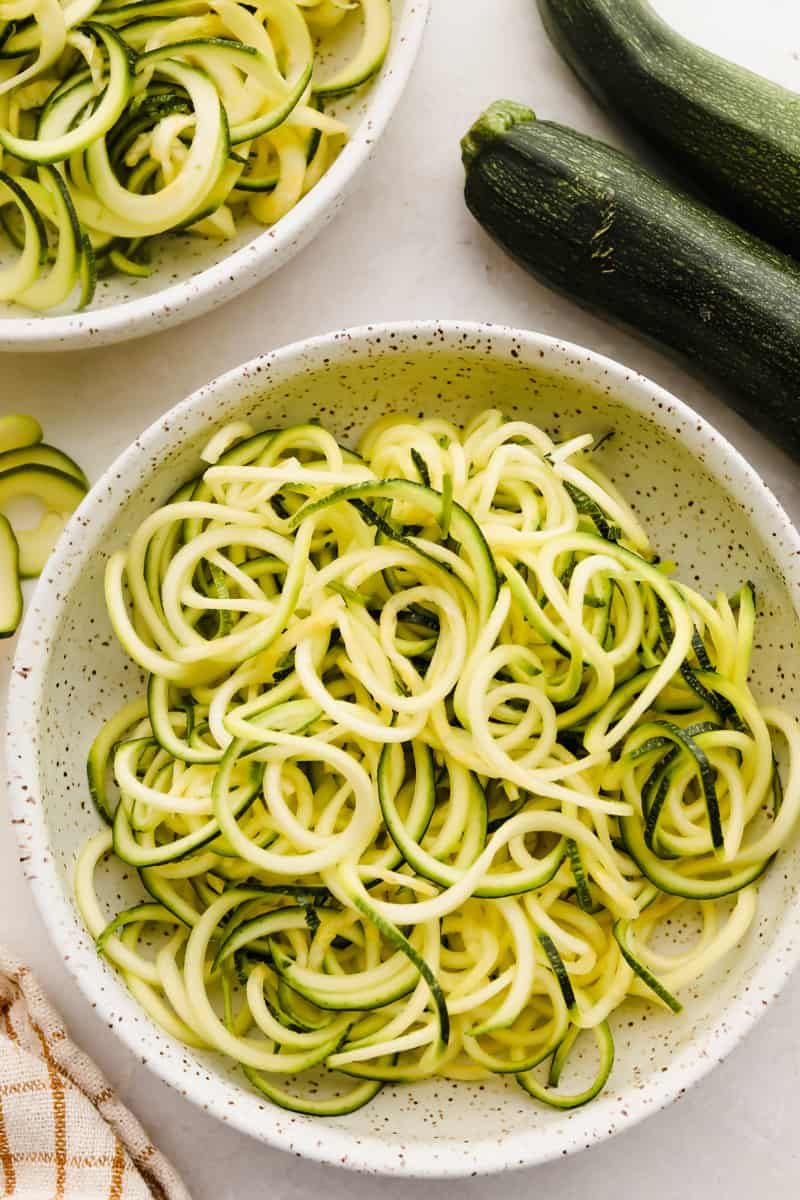
Unassuming yet deeply hydrating, zucchini comes in at about 94% water. Sautéed, grilled, or spiralized, it adapts to countless culinary formats. This summer squash brings not only moisture but also vitamin A and manganese to the table. Its light texture and mellow flavor make it ideal for dishes where hydration is needed without overpowering taste. Roasted zucchini rounds or raw zoodles can add variety and water to your meals in an instant. Grating it into baked goods adds sneaky moisture and nutrition. Among summer vegetables, zucchini quietly shines as a hydration booster.
7. Tomatoes
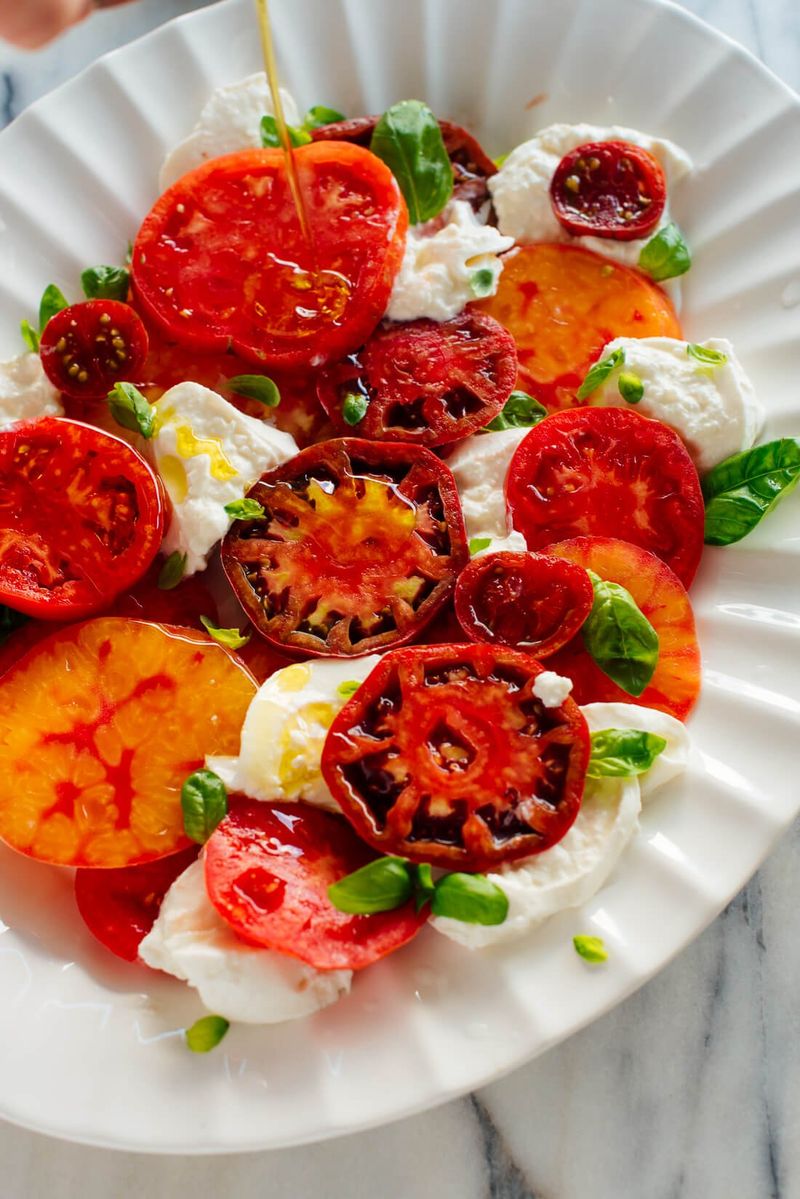
Juicy and versatile, tomatoes are culinary chameleons that contribute roughly 94% water. Sliced fresh, juiced, or cooked down into sauces, they remain a hydration powerhouse. Lycopene, their signature antioxidant, supports heart health and skin resilience under the sun. While commonly seen in savory dishes, tomatoes pair surprisingly well with fruit in cooling summer salads. The natural acidity and water content work to refresh the palate. Even cherry or grape tomatoes offer hydration in snack-sized bursts. Including them regularly helps you fight off dryness and fatigue.
8. Cantaloupe
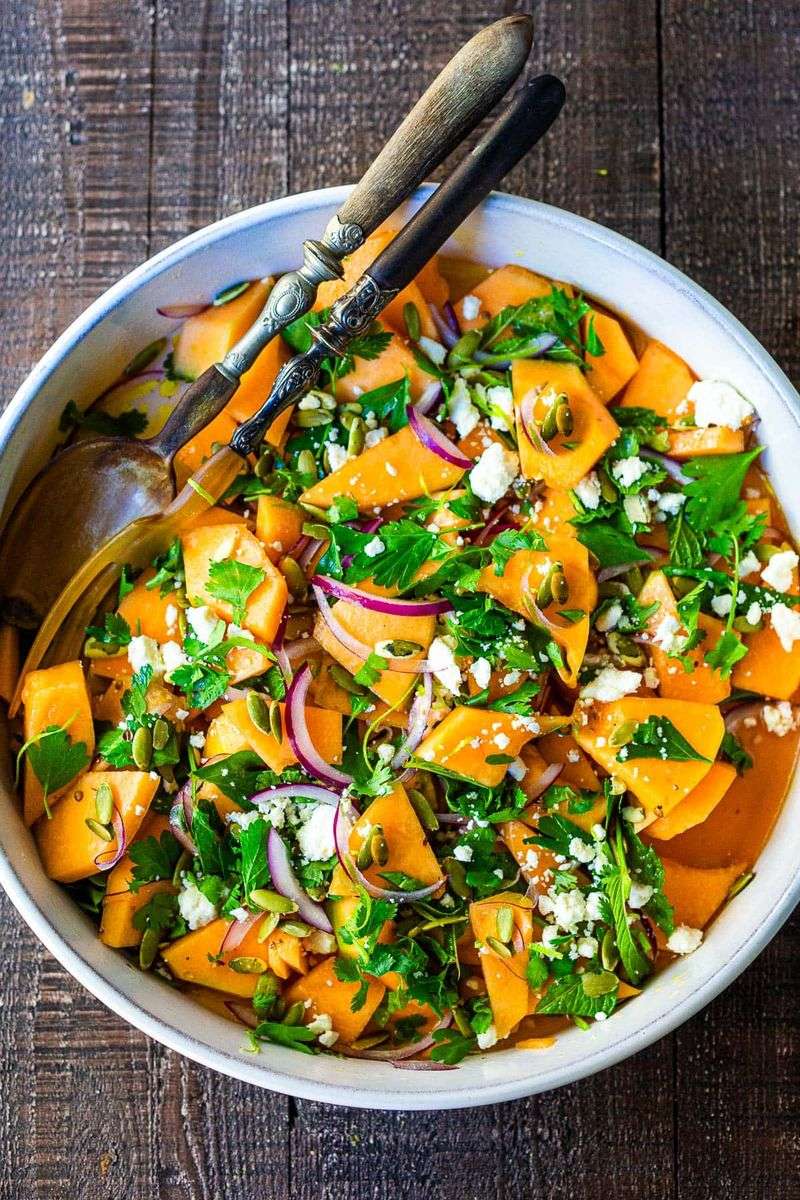
Vivid orange flesh and a perfume-like aroma make cantaloupe a summer sensation. About 90% water and packed with vitamin A and C, it quenches thirst and supports healthy skin. Unlike many fruits, cantaloupe also contributes beta-carotene, giving your summer diet a colorful nutrient lift. Enjoyed cubed, pureed, or chilled, it’s a refreshing alternative to sugary desserts. Its juicy texture makes it easy to digest, especially when the appetite dips in the heat. Cantaloupe smoothies or frozen chunks can double as nutritious treats. Add it to fruit salads for extra hydration with every spoonful.
9. Peaches
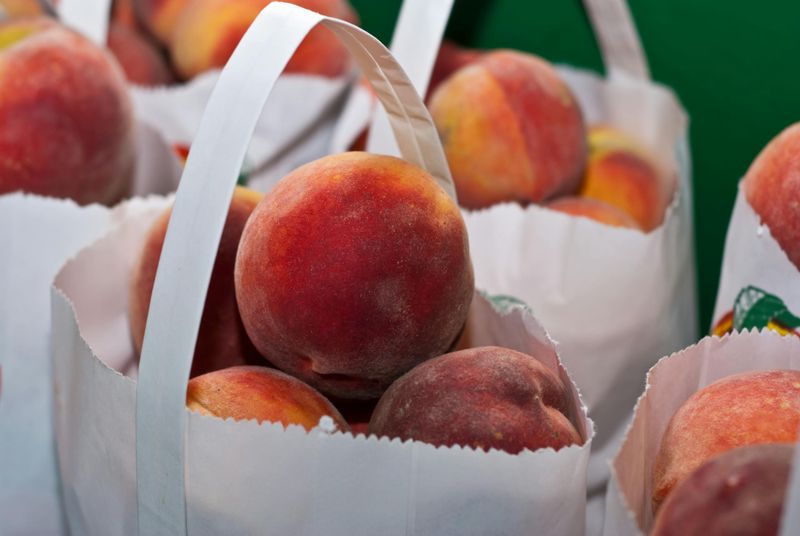
Soft, fuzzy, and dripping with juice, peaches contain about 89% water. Each bite delivers hydration along with vitamins A, C, and E—an antioxidant trio ideal for sun-drenched skin. Unlike more acidic fruits, peaches have a mellow sweetness that pairs well in savory and sweet dishes. Sliced on cereal, grilled with balsamic glaze, or eaten straight, they shine all summer. Their hydration helps balance the drying effects of alcohol or salty snacks. Light yet filling, peaches work wonders in cooling smoothies and sorbets. Let them ripen fully for the best flavor and moisture content.
10. Oranges
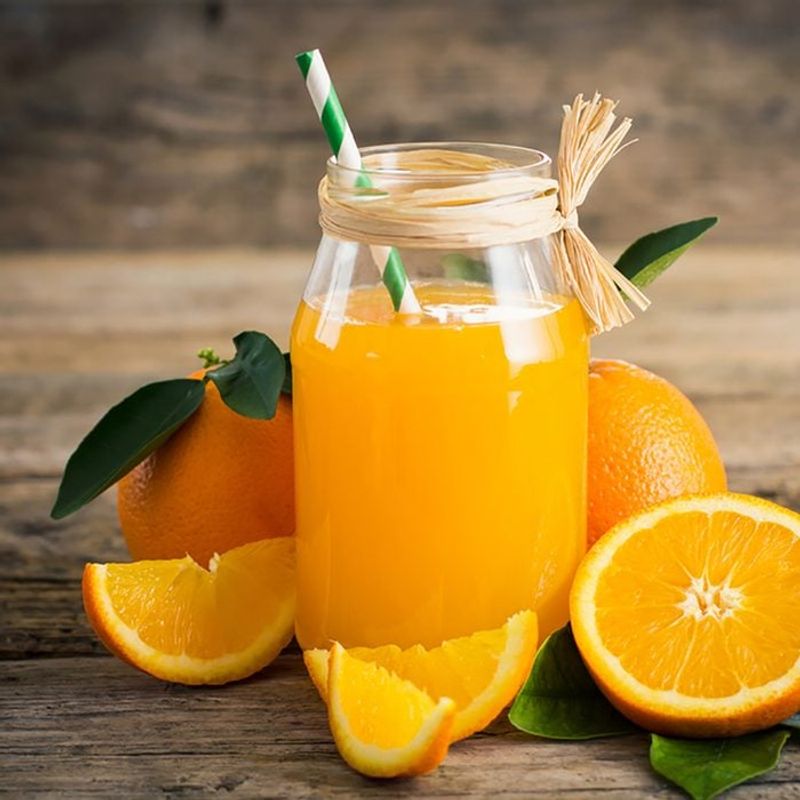
Zesty and packed with flavor, oranges serve as natural electrolyte bombs. With around 87% water, they hydrate while delivering potassium, a mineral crucial for fluid balance. More than just vitamin C powerhouses, oranges also contain natural sugars that provide a clean energy boost. Their fibrous pith enhances satiety and slows digestion, making them ideal midday snacks. Whether juiced or eaten whole, they help ward off heat fatigue. Pairing oranges with protein makes for a balanced, hydrating mini-meal. Their bright acidity adds life to both savory and sweet dishes.
11. Pineapple
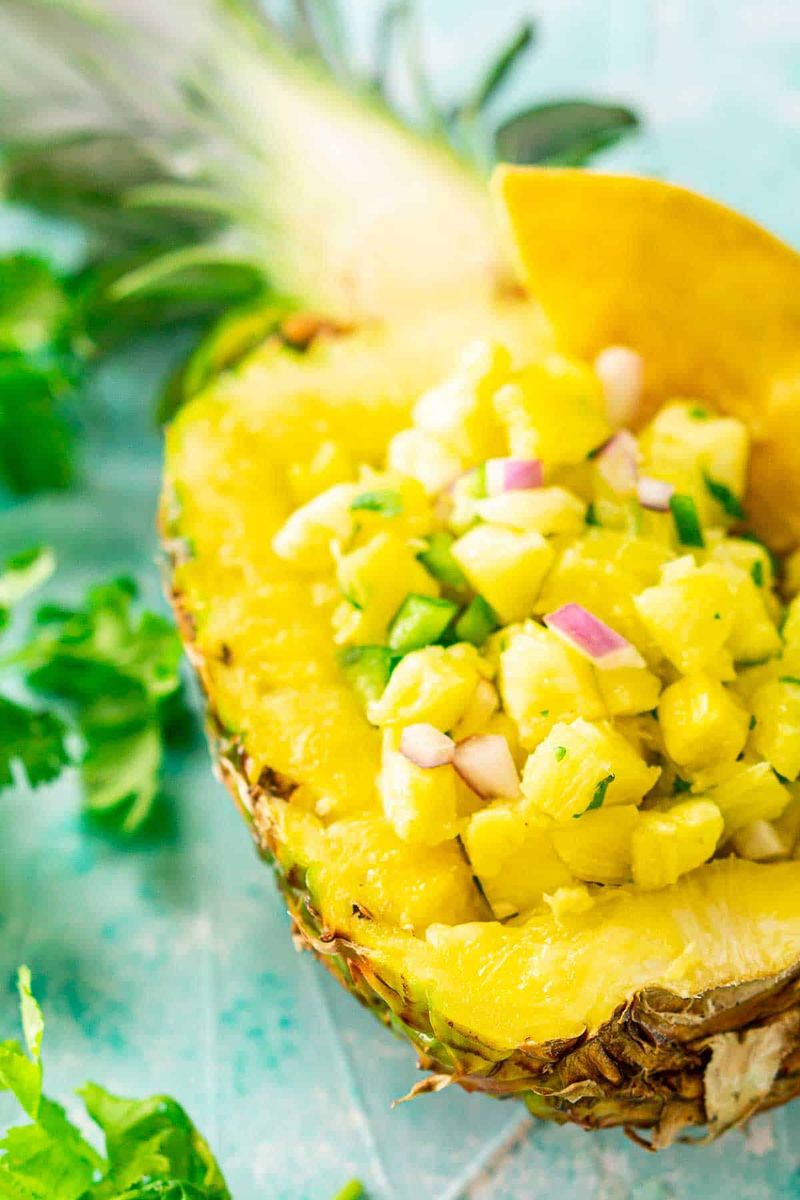
Tart, tropical, and boldly juicy, pineapple is a hydration-friendly fruit with about 86% water. Bromelain, an enzyme found in pineapple, supports digestion, especially during heavy summer meals. The juicy flesh naturally refreshes the body and helps reduce inflammation. As a hydrating option, pineapple blends beautifully into frozen drinks or grilled skewers. Its golden hue mirrors the sun, and its nutrients support immune function during seasonal shifts. A few chunks post-workout can rehydrate and replenish tired muscles. Its sweet-tart balance makes it ideal for vibrant summer meals.
12. Bell Peppers
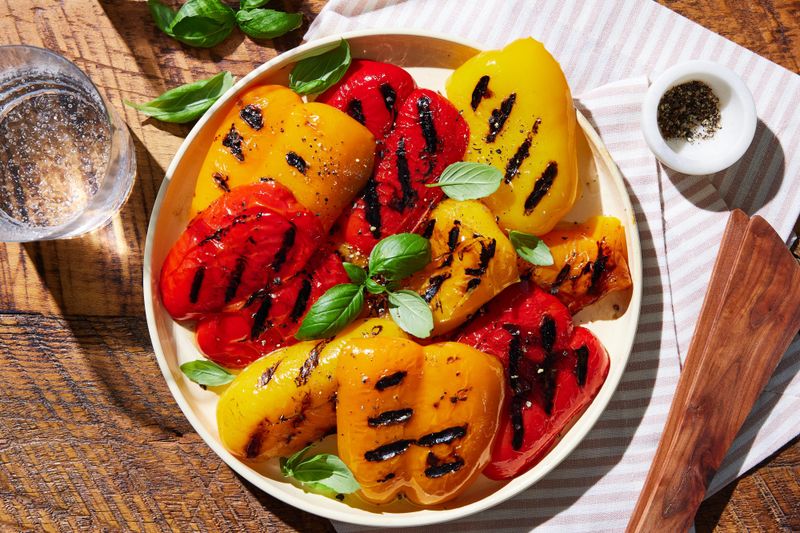
Snappy, vibrant, and full of crunch, bell peppers come with over 92% water content. Red, yellow, and green varieties bring not only color but vitamin C and antioxidants to your plate. These peppers hydrate while also supporting immunity and skin repair. Sliced raw with hummus or tossed into stir-fries, they’re one of summer’s most versatile vegetables. Low in calories but high in nutrients, they fit into any health-focused diet. Roasting them enhances their sweetness without compromising hydration. Their refreshing crunch makes them perfect for hot weather nibbling.
13. Coconut Water
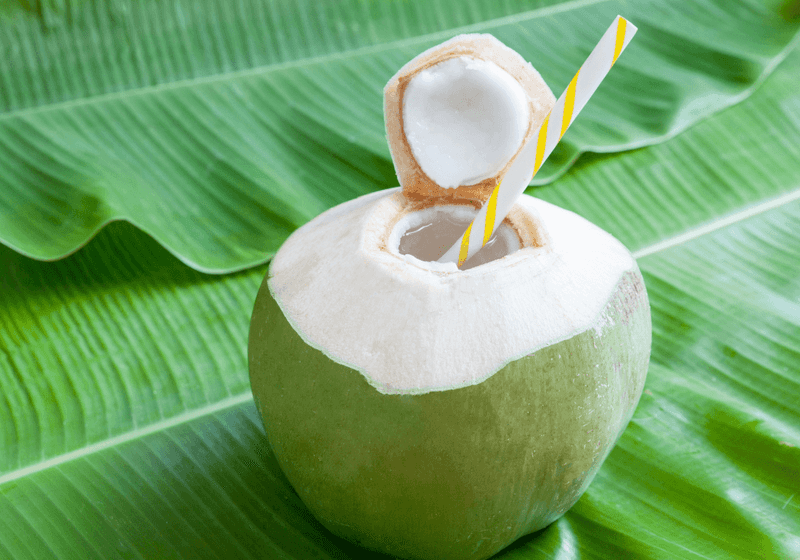
Sipped straight from the source or bottled, coconut water offers nature’s own electrolyte drink. Though technically a beverage, its nutrient density earns it a place among food-based hydration heroes. It contains potassium, sodium, and magnesium, all of which are essential for fluid regulation. Replacing sugary sports drinks, it helps prevent cramping and fatigue during hot weather activities. Blending it into smoothies can add depth without heaviness. It rehydrates quickly without bloating, ideal for active days in the sun. More than trendy, it’s functionally refreshing.
14. Spinach
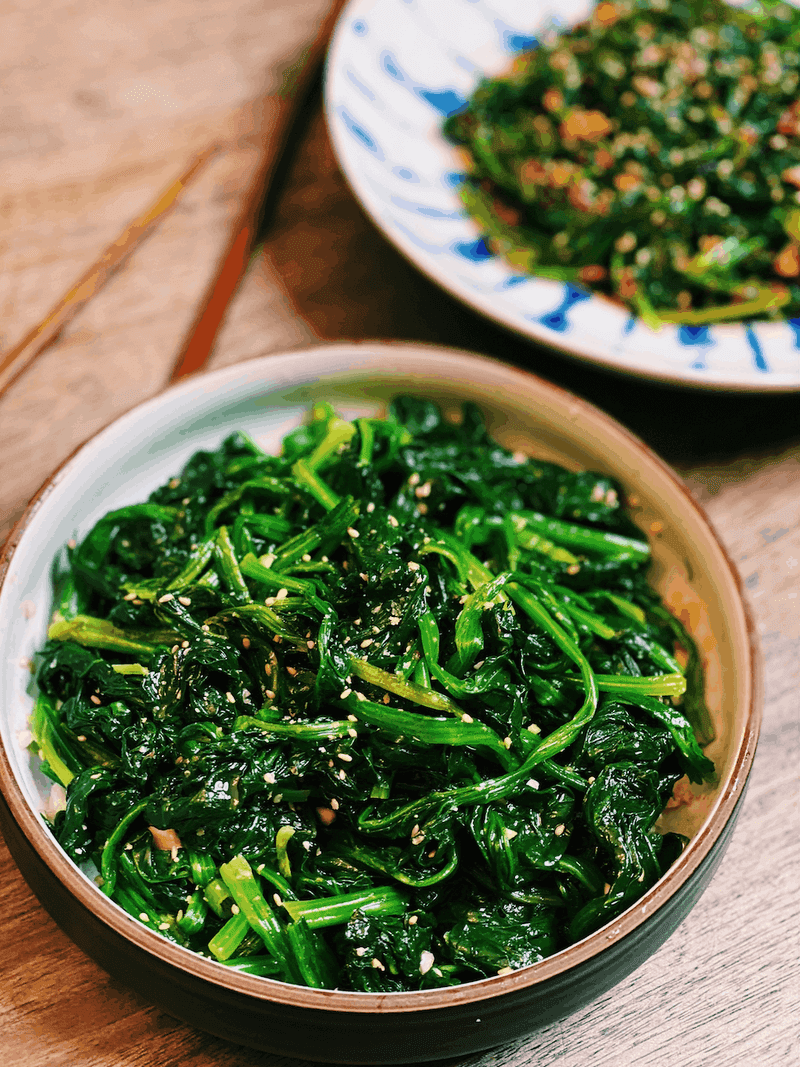
Leafy and lush, spinach clocks in with about 91% water content. Often eaten wilted or raw, it boosts hydration while providing iron, folate, and magnesium. Its slight bitterness complements sweet fruits in smoothies or salads. When hydration needs to pair with nutrition, spinach rises to the occasion. Cooking it down does reduce water content but concentrates its other nutrients. In summer, chilled spinach salads with citrus or berries create a hydrating, balanced meal. This leafy green brings a powerhouse of benefits with every forkful.
15. Radishes
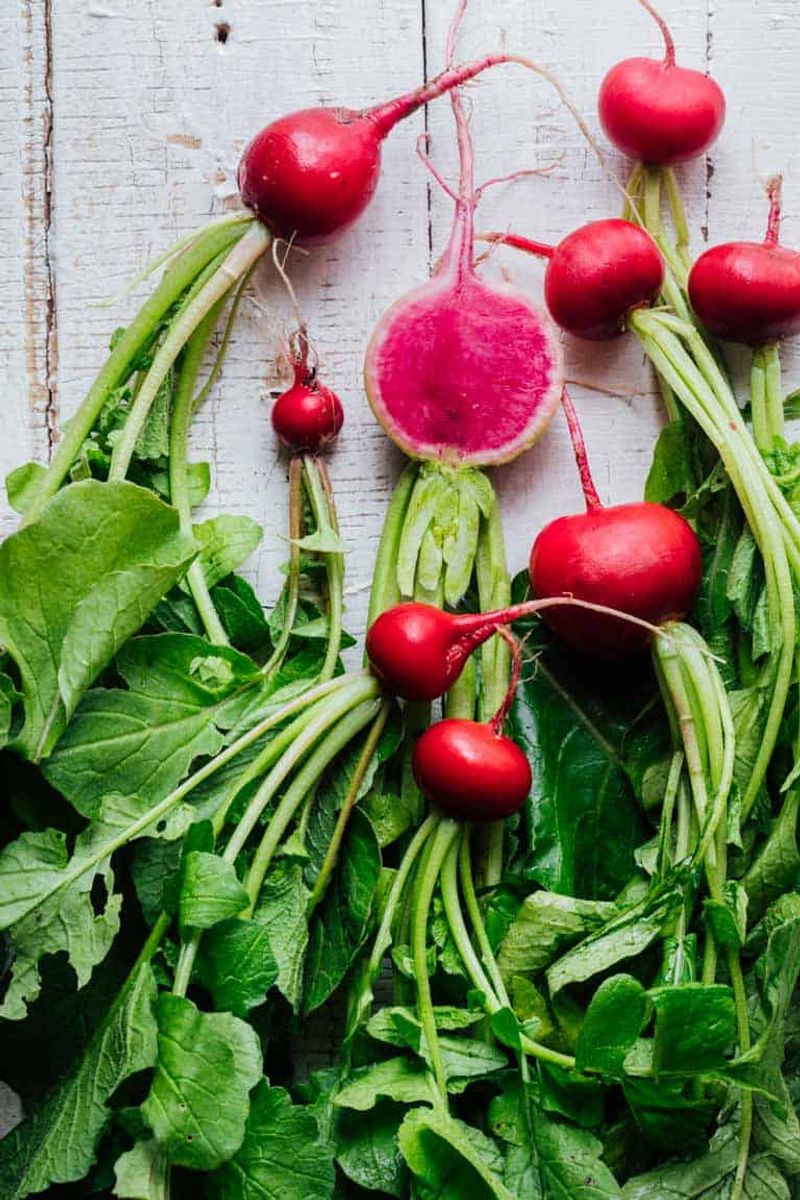
Peppery and crisp, radishes offer both bite and water—nearly 95% of their composition. Their sharp flavor contrasts beautifully with rich or fatty summer dishes. As natural diuretics, they can support detox while maintaining hydration. Sliced thin into salads or pickled for tangy crunch, radishes pack more than meets the eye. They also carry vitamin C and a little fiber, enhancing their cooling effect. With roots in traditional medicine as cooling agents, their role isn’t just culinary. Crisp, cold, and vibrant, radishes shine as both garnish and key player.
1. Salty Snacks (Chips, Pretzels)
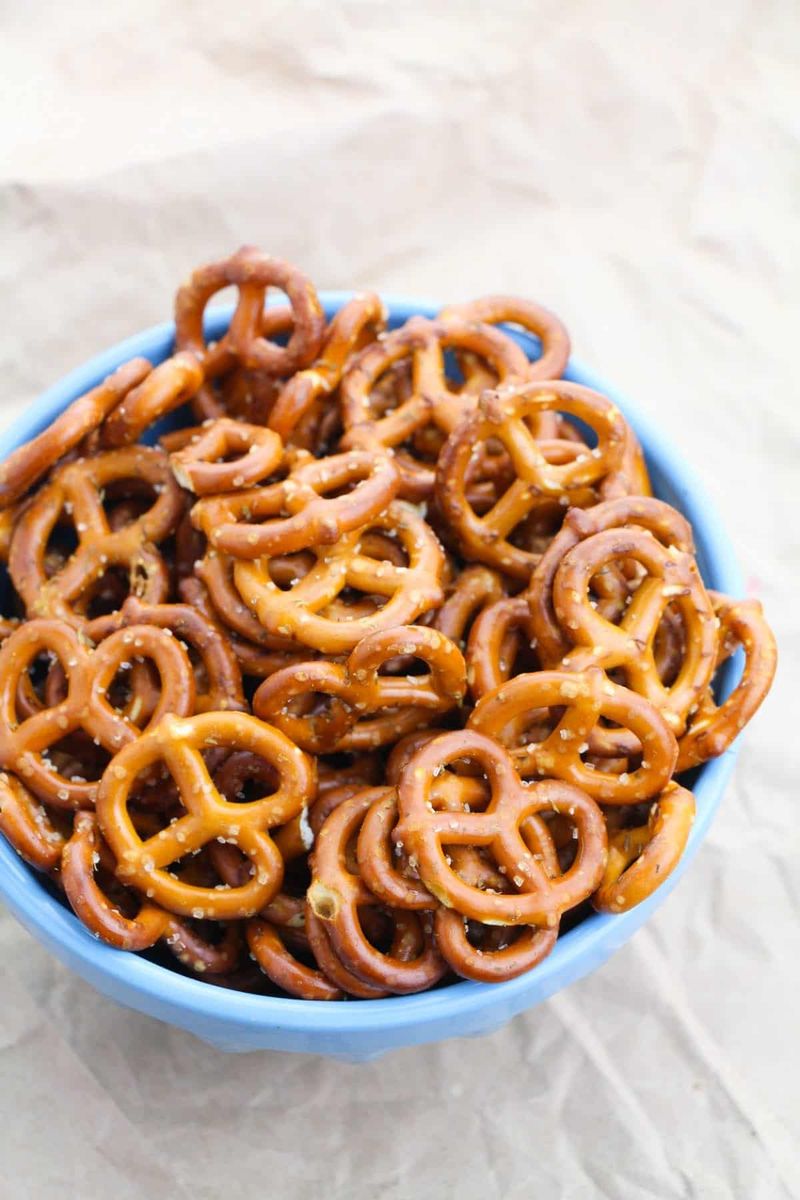
Craving salt in the heat might seem harmless, but salty snacks often trigger dehydration. Sodium draws water out of your cells, increasing your thirst without truly satisfying it. Munching on chips or pretzels may cause water retention while leaving your mouth dry. When consumed regularly in summer, they contribute to bloating and sluggishness. Swapping them for lightly salted nuts or air-popped popcorn can lessen the impact. Your best bet is pairing them with water-rich foods if you can’t resist. Otherwise, keep them minimal during hot spells.
2. Caffeinated Beverages (Coffee, Energy Drinks)

Buzz-inducing yet stealthily dehydrating, caffeinated drinks should be consumed in moderation when it’s hot. While one cup of coffee won’t sabotage your hydration, multiple servings can tip the balance. Caffeine increases urine output, potentially accelerating fluid loss. Energy drinks compound the issue with added sugars and artificial stimulants. If you rely on caffeine, balancing it with extra water is critical. Iced alternatives or herbal teas can reduce the impact. Hydration should always come first, especially when temperatures rise.
3. Processed Meats (Sausage, Deli Meats)

Flavorful but loaded with salt, processed meats contribute significantly to fluid imbalance. Hidden sodium levels make them especially drying, often exceeding daily recommendations. These meats also lack the hydration benefit of fresh protein sources. Grilling hot dogs or sausages may be traditional, but too much can dry you from the inside out. Opting for fresh-cooked poultry or plant-based alternatives supports hydration better. If consumed, they should be paired with hydrating sides like cucumbers or melon. Watch the labels and limit your intake in high heat.
4. Fried Foods
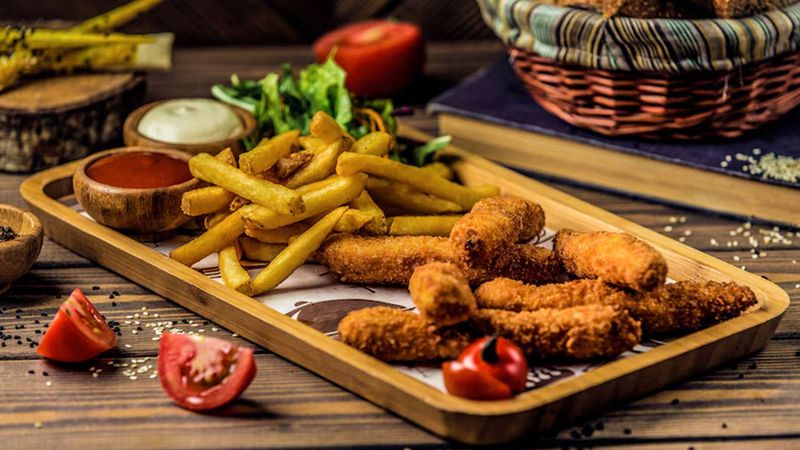
Golden, greasy, and addictive, fried foods wreak havoc on hydration. Their heavy oil content slows digestion and increases internal heat. Often accompanied by salty dips or breading, they create a one-two punch of dehydration. Fried fare offers little in the way of moisture or nutrients. After consuming, you’re likely to feel sluggish and thirsty without knowing why. Summer menus benefit from grilled or roasted options instead. Skip the fryer for a cooler, more balanced plate.
5. Alcohol

Popular in social settings, alcohol masks its dehydrating effects with buzz and refreshment. As a diuretic, it promotes fluid loss, even in small amounts. Sipping cocktails poolside can rapidly increase your risk of heat-related dehydration. High-proof drinks are the most potent offenders, especially when mixed with sugar. Staying mindful of water intake while drinking is essential. Alternating with coconut water or fruit-based mocktails can help offset the effects. Ultimately, moderation is your best ally in the sun.
Leave a comment